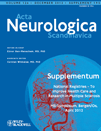From the Gothenburg cohort to the Swedish multiple sclerosis registry
Abstract
An overview of prevalence and incidence studies performed in Swedish centres is provided, showing improving coverage and methodology, notably the development in Gothenburg of the representative incidence cohort design. A common database for major Swedish centres was established in 1995, implementing the terminology of predictors from the Gothenburg cohort. By 2001, these databases were merged into the web-based national multiple sclerosis (MS) registry, which has had an ever-increasing coverage, although with still moderate data density. The registry now contains records on 13,000 Swedish patients with MS. It has the status of a national quality registry and exerts nation-wide pharmacological surveillance. In addition, it has been, and is being, used in nearly 100 scientific studies, including large epidemiological and genetic projects.




